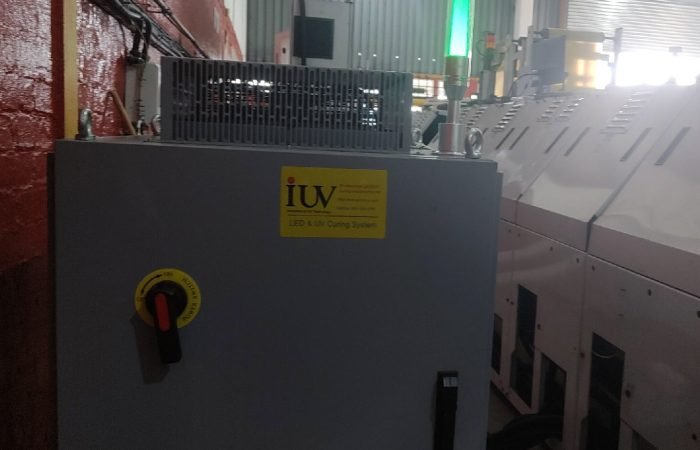Pharmaceutical labels demand absolute accuracy. They also need to withstand harsh environments. Traditional printing methods sometimes struggle to meet these stringent requirements. However, advancements in technology offer powerful solutions. UV curing flexographic printing is one such innovation making waves. Specifically, LED UV curing is transforming the landscape of narrow web printing for pharma.
Flexographic printing, often called flexo, is a versatile printing technique. It uses a flexible relief plate to transfer ink. This makes it ideal for printing on a variety of substrates. This includes the films and foils commonly used in pharmaceutical packaging. Flexo printing excels at high-speed, high-volume production. This is a critical factor for pharmaceutical companies. They need to produce vast quantities of labels efficiently.
When flexo printing is combined with UV curing, it offers significant advantages. UV curing uses ultraviolet light to instantly dry or “cure” ink. This process transforms liquid ink into a solid, durable film. It adheres strongly to the label substrate. This rapid curing means less waiting time between printing stations. It also allows for heavier ink laydowns without smearing. For pharmaceutical labels, this means vibrant, crisp graphics and sharp text. This ensures crucial information remains legible.
Traditional offset printing, or sheetfed printing, is another common method. It uses a flat plate to transfer ink via a roller. While excellent for commercial printing, offset often requires absorbent substrates. It can also be slower and more complex for the web-fed processes typical in narrow web label printing. Flexography, on the other hand, is inherently suited for roll-to-roll printing. This is the standard for most label production. Narrow web printing specifically refers to printing on narrow rolls of material, typically under 20 inches wide. This is the perfect format for pharmaceutical labels.
The integration of LED UV curing takes flexo printing to a new level. Unlike traditional mercury-vapor UV lamps, LED UV systems offer numerous benefits. They consume less energy, which translates to lower operating costs. They also generate less heat. This is crucial when printing on sensitive or heat-sensitive materials. Many pharmaceutical labels are applied to plastics or foils that can warp or degrade under excessive heat. LED UV’s cooler operation prevents such issues.
Furthermore, LED UV lamps have a much longer lifespan than mercury lamps. They also reach full power instantly. There’s no warm-up or cool-down period required. This improves efficiency and reduces downtime. For pharmaceutical manufacturers, this means more consistent production and fewer interruptions. The environmental benefits are also noteworthy. Reduced energy consumption and the absence of mercury in LED lamps contribute to a greener printing process.
The durability of UV cured inks is paramount for pharmaceutical labels. These labels often need to endure a range of conditions. This can include exposure to chemicals, abrasion, and varying temperatures. UV cured inks form a highly cross-linked polymer film. This film is exceptionally resistant to these challenges. It prevents ink from fading, cracking, or rubbing off. This ensures that dosage information, batch numbers, and expiration dates remain intact throughout the product’s lifecycle. This level of durability is non-negotiable in the pharmaceutical industry.
Adhesion is another key area where UV curing shines. The rapid polymerization process creates a strong bond between the ink and the substrate. This is vital for labels that might be exposed to moisture or high humidity. It also ensures the label stays put during shipping and handling. This prevents costly label failures and ensures regulatory compliance.
The versatility of UV flexo printing with LED curing extends to special effects. High-build varnishes can be applied for tactile finishes. Metallic or pearlescent inks can add a premium look. These effects can help distinguish pharmaceutical products on crowded shelves. They can also enhance brand recognition. While the primary focus is on clarity and information, aesthetics still play a role.
Narrow web flexo printing, powered by LED UV curing, offers a streamlined workflow. The ability to print, cure, and finish in a single pass reduces production time significantly. This agility allows pharmaceutical companies to respond quickly to market demands. They can also accommodate shorter print runs more economically. This flexibility is a competitive advantage in a fast-paced industry.
In summary, the adoption of LED UV curing in flexographic narrow web printing presents a compelling case for pharmaceutical label production. The combination delivers unparalleled speed, exceptional durability, superior adhesion, and enhanced print quality. It also offers energy efficiency and a reduced environmental impact. This makes it a forward-thinking choice for any pharmaceutical brand prioritizing both performance and sustainability. The precision and reliability it affords are precisely what the pharmaceutical sector requires.












